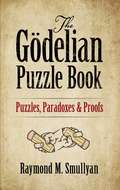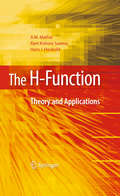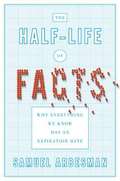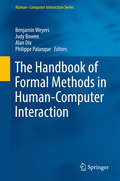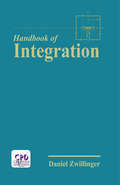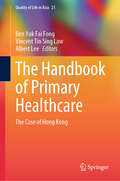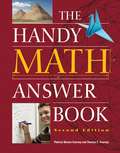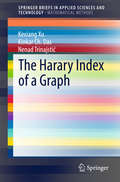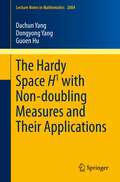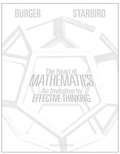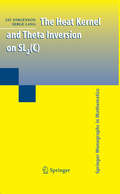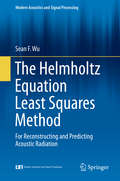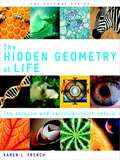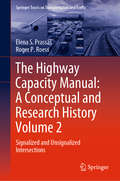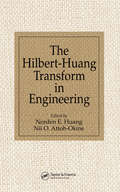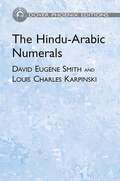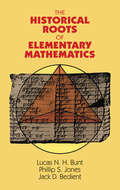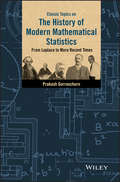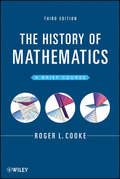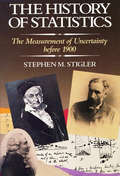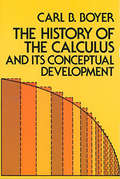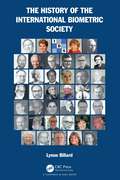- Table View
- List View
The Gödelian Puzzle Book: Puzzles, Paradoxes and Proofs
by Raymond M. SmullyanThese brand-new recreational logic puzzles provide entertaining variations on Gödel's incompleteness theorems, offering ingenious challenges related to infinity, truth and provability, undecidability, and other concepts. Created by the celebrated logician Raymond Smullyan, the puzzles require no background in formal logic and will delight readers of all ages.The two-part selection of puzzles and paradoxes begins with examinations of the nature of infinity and some curious systems related to Gödel's theorem. The first three chapters of Part II contain generalized Gödel theorems. Symbolic logic is deferred until the last three chapters, which give explanations and examples of first-order arithmetic, Peano arithmetic, and a complete proof of Gödel's celebrated result involving statements that cannot be proved or disproved. The book also includes a lively look at decision theory, better known as recursion theory, which plays a vital role in computer science.
The H-Function
by Ram Kishore Saxena Hans J. Haubold A. M. MathaiThe two main topics emphasized in this book, special functions and fractional calculus, are currently under fast development in theory and application to many problems in statistics, physics, and engineering, particularly in condensed matter physics, plasma physics, and astrophysics. The book begins by setting forth definitions, contours, existence conditions, and particular cases of the H-function. The authors then deal with Laplace, Fourier, Hankel, and other transforms. As these relations are explored, fractional calculus and its relations to H-functions emerge with important results on fractional differentiation and fractional integral operators. The latter chapters explore applications of H-functions in statistical distribution theory, structures of random variables, generalized distributions, Mathai's pathway models, and versatile integrals. The authors also present an introduction to functions of matrix argument, with special focus on the space of Hermitian positive matrices. The book concludes with the most recent applications of H-functions and fractional calculus to physical problems in reactions, diffusion, reaction-diffusion theory, statistics, superstatistics, and generalized entropies.
The Half-Life of Facts: Why Everything We Know Has an Expiration Date
by Samuel ArbesmanNew insights from the science of science Facts change all the time. Smoking has gone from doctor recommended to deadly. We used to think the Earth was the center of the universe and that Pluto was a planet. For decades, we were convinced that the brontosaurus was a real dinosaur. In short, what we know about the world is constantly changing. But it turns out there’s an order to the state of knowledge, an explanation for how we know what we know. Samuel Arbesman is an expert in the field of scientometrics-literally the science of science. Knowledge in most fields evolves systematically and predictably, and this evolution unfolds in a fascinating way that can have a powerful impact on our lives. Doctors with a rough idea of when their knowledge is likely to expire can be better equipped to keep up with the latest research. Companies and governments that understand how long new discoveries take to develop can improve decisions about allocating resources. And by tracing how and when language changes, each of us can better bridge generational gaps in slang and dialect. Just as we know that a chunk of uranium can break down in a measurable amount of time-a radioactive half-life-so too any given field’s change in knowledge can be measured concretely. We can know when facts in aggregate are obsolete, the rate at which new facts are created, and even how facts spread. Arbesman takes us through a wide variety of fields, including those that change quickly, over the course of a few years, or over the span of centuries. He shows that much of what we know consists of "mesofacts”-facts that change at a middle timescale, often over a single human lifetime. Throughout, he offers intriguing examples about the face of knowledge: what English majors can learn from a statistical analysis of The Canterbury Tales, why it’s so hard to measure a mountain, and why so many parents still tell kids to eat their spinach because it’s rich in iron. The Half-life of Facts is a riveting journey into the counterintuitive fabric of knowledge. It can help us find new ways to measure the world while accepting the limits of how much we can know with certainty. .
The Handbook of Formal Methods in Human-Computer Interaction
by Philippe Palanque Benjamin Weyers Judy Bowen Alan DixThis book provides a comprehensive collection of methods and approaches for using formal methods within Human-Computer Interaction (HCI) research, the use of which is a prerequisite for usability and user-experience (UX) when engineering interactive systems. World-leading researchers present methods, tools and techniques to design and develop reliable interactive systems, offering an extensive discussion of the current state-of-the-art with case studies which highlight relevant scenarios and topics in HCI as well as presenting current trends and gaps in research and future opportunities and developments within this emerging field. The Handbook of Formal Methods in Human-Computer Interaction is intended for HCI researchers and engineers of interactive systems interested in facilitating formal methods into their research or practical work.
The Handbook of Integration
by Daniel ZwillingerThis book is a compilation of the most important and widely applicable methods for evaluating and approximating integrals. It is an indispensable time saver for engineers and scientists needing to evaluate integrals in their work. From the table of contents: - Applications of Integration - Concepts and Definitions - Exact Analytical Methods - Appro
The Handbook of Primary Healthcare: The Case of Hong Kong (Quality of Life in Asia #21)
by Ben Yuk Fai Fong Vincent Tin Sing Law Albert LeeThis handbook adopts a transdisciplinary approach to primary healthcare, incorporating a wide scope of perspectives and case studies from Hong Kong in China. It consists of four sections that explore the foundations, practices, development aspects of primary healthcare and systems. The book also pays particular attention to the psychosocial and humanistic contexts of primary healthcare, exploring dimensions such as misinformation in the age of social media in health communication and aspects of resilience in primary healthcare. With contributions from scholars and practitioners in areas that include family medicine, psychology, nutrition, health policy, health education, dentistry, social work, as well as Chinese medicine, it is an expansive presentation of current knowledge on healthcare in the community setting. It is an indispensable reference for policymakers, researchers, advanced students, primary healthcare professionals, community health practitioners, and health managers and educators seeking to collate the practical and philosophical aspects of healthcare, in Hong Kong particularly, but also in Greater China and Asia more broadly. Beyond its relevance to the immediate medical community, it is also a valuable text for researchers in medical law, social sciences, quality of life studies, public policy, business administration, and information technology and health communication.
The Handy Math Answer Book
by Patricia Barnes-Svarney Thomas E SvarneyFrom modern-day challenges such as balancing a checkbook, following the stock market, buying a home, and figuring out credit card finance charges to appreciating historical developments by Pythagoras, Archimedes, Newton, and other mathematicians, this engaging resource addresses more than 1,000 questions related to mathematics. Organized into chapters that cluster similar topics in an easily accessible format, this reference provides clear and concise explanations about the fundamentals of algebra, calculus, geometry, trigonometry, and other branches of mathematics. It contains the latest mathematical discoveries, including newly uncovered historical documents and updates on how science continues to use math to make cutting-edge innovations in DNA sequencing, superstring theory, robotics, and computers. With fun math facts and illuminating figures, The Handy Math Answer Book explores the uses of math in everyday life and helps the mathematically challenged better understand and enjoy the magic of numbers.
The Harary Index of a Graph
by Kexiang Xu Kinkar Ch. Das Nenad TrinajstićThis is the first book to focus on the topological index, the Harary index, of a graph, including its mathematical properties, chemical applications and some related and attractive open problems. This book is dedicated to Professor Frank Harary (1921--2005), the grandmaster of graph theory and its applications. It has be written by experts in the field of graph theory and its applications. For a connected graph G, as an important distance-based topological index, the Harary index H(G) is defined as the sum of the reciprocals of the distance between any two unordered vertices of the graph G. In this book, the authors report on the newest results on the Harary index of a graph. These results mainly concern external graphs with respect to the Harary index; the relations to other topological indices; its properties and applications to pure graph theory and chemical graph theory; and two significant variants, i. e. , additively and multiplicatively weighted Harary indices. In the last chapter, we present a number of open problems related to the Harary index. As such, the book will not only be of interest to graph researchers, but to mathematical chemists as well.
The Hardy Space H1 with Non-doubling Measures and Their Applications
by Dachun Yang Dongyong Yang Guoen HuThe present book offers an essential but accessible introduction to the discoveries first made in the 1990s that the doubling condition is superfluous for most results for function spaces and the boundedness of operators. It shows the methods behind these discoveries, their consequences and some of their applications. It also provides detailed and comprehensive arguments, many typical and easy-to-follow examples, and interesting unsolved problems. The theory of the Hardy space is a fundamental tool for Fourier analysis, with applications for and connections to complex analysis, partial differential equations, functional analysis and geometrical analysis. It also extends to settings where the doubling condition of the underlying measures may fail.
The Heart of Mathematics (4th Edition): An Invitation to Effective Thinking
by Edward B. Burger Michael StarbirdTransform your mathematics course into an engaging and mind-opening experience for even your most math-phobic students. Now in its Fourth Edition, The Heart of Mathematics: An Invitation to Effective Thinking succeeds at reaching non-math, non-science-oriented majors, encouraging them to discover the mathematics inherent in the world around them. Infused with the authors' humor and enthusiasm throughout, The Heart of Mathematics introduces students to the most important and interesting ideas in mathematics while inspiring them to actively engage in mathematical thinking.
The Heat Kernel and Theta Inversion on SL2(C)
by Jay Jorgenson Serge LangThe worthy purpose of this text is to provide a complete, self-contained development of the trace formula and theta inversion formula for SL(2,Z[i])\SL(2,C). Unlike other treatments of the theory, the approach taken here is to begin with the heat kernel on SL(2,C) associated to the invariant Laplacian, which is derived using spherical inversion. The heat kernel on the quotient space SL(2,Z[i])\SL(2,C) is arrived at through periodization, and further expanded in an eigenfunction expansion. A theta inversion formula is obtained by studying the trace of the heat kernel. Following the author's previous work, the inversion formula then leads to zeta functions through the Gauss transform.</
The Helmholtz Equation Least Squares Method
by Sean F. WuThis book represents the HELS (Helmholtz equation least squares) theory and its applications for visualizing acoustic radiation from an arbitrarily shaped vibrating structure in free or confined space. yIt culminates the most updated research work of the author and his graduate students since 1997. yThe book contains six chapters. yThe first serves as a review of the fundamentals in acoustics and the rest cover five specific topics on the HELS theory. "
The Hidden Geometry of Life: The Science and Spirituality of Nature
by Karen L. FrenchEncompassing nature, science, art, architecture, and spirituality, and illustrated with over 700 photographs and line drawings, "The Hidden Geometry of Life" illuminates the secret underpinnings of existence. In her trademark easy-to-understand style, mathematician Karen French shows how sacred geometry permeates every level of being, manifesting itself in simple shapes and numbers, music and sounds, light and color, even in the mysteries of creation itself. But these geometrical archetypes are more than the building blocks of reality: they are gateways to profound new levels of awareness.
The Higher Arithmetic
by H. DavenportNow into its Eighth edition, The Higher Arithmetic introduces the classic concepts and theorems of number theory in a way that does not require the reader to have an in-depth knowledge of the theory of numbers The theory of numbers is considered to be the purest branch of pure mathematics and is also one of the most highly active and engaging areas of mathematics today. Since earlier editions, additional material written by J. H. Davenport has been added, on topics such as Wiles' proof of Fermat's Last Theorem, computers & number theory, and primality testing. Written to be accessible to the general reader, this classic book is also ideal for undergraduate courses on number theory, and covers all the necessary material clearly and succinctly.
The Highway Capacity Manual: Signalized and Unsignalized Intersections (Springer Tracts on Transportation and Traffic #12)
by Elena S. Prassas Roger P. RoessSince 1950, the Highway Capacity Manual has been a standard used in the planning, design, analysis, and operation of virtually any highway traffic facility in the United States. It has also been widely used around the globe and has inspired the development of similar manuals in other countries. This book is Volume II of a series on the conceptual and research origins of the methodologies found in the Highway Capacity Manual. It focuses on the most complex points in a traffic system: signalized and unsignalized intersections, and the concepts and methodologies developed over the years to model their operations. It also includes an overview of the fundamental concepts of capacity and level of service, particularly as applied to intersections. The historical roots of the manual and its contents are important to understanding current methodologies, and improving them in the future. As such, this book is a valuable resource for current and future users of the Highway Capacity Manual, as well as researchers and developers involved in advancing the state-of-the-art in the field.
The Hilbert-Huang Transform in Engineering
by Nii O. Attoh-Okine Norden HuangData used to develop and confirm models suffer from several shortcomings: the total data is too limited, the data are non-stationary, and the data represent nonlinear processes. The Hilbert-Huang transform (HHT) is a relatively new method that has grown into a robust tool for data analysis and is ready for a wide variety of applications.Thi
The Hindu-Arabic Numerals (Dover Books on Mathematics)
by David Eugene Smith Louis Charles KarpinskiThe numbers that we call Arabic are so familiar throughout Europe and the Americas that it can be difficult to realize that their general acceptance in commercial transactions is a matter of only the last four centuries and they still remain unknown in parts of the world.In this volume, one of the earliest texts to trace the origin and development of our number system, two distinguished mathematicians collaborated to bring together many fragmentary narrations to produce a concise history of Hindu-Arabic numerals. Clearly and succinctly, they recount the labors of scholars who have studied the subject in different parts of the world; they then assess the historical testimony and draw conclusions from its evidence. Topics include early ideas of the origin of numerals; Hindu forms with and without a place value; the symbol zero; the introduction of numbers into Europe by Boethius; the development of numerals among Arabic cultures; and the definitive introduction of numerals into Europe and their subsequent spread. Helpful supplements to the text include a guide to the pronunciation of Oriental names and an index.
The Historical Roots of Elementary Mathematics
by Lucas N. Bunt Jack D. Bedient Phillip S. Jones"Will delight a broad spectrum of readers." -- American Mathematical MonthlyDo long division as the ancient Egyptians did! Solve quadratic equations like the Babylonians! Study geometry just as students did in Euclid's day! This unique text offers students of mathematics an exciting and enjoyable approach to geometry and number systems. Written in a fresh and thoroughly diverting style, the text -- while designed chiefly for classroom use -- will appeal to anyone curious about mathematical inscriptions on Egyptian papyri, Babylonian cuneiform tablets, and other ancient records.The authors have produced an illuminated volume that traces the history of mathematics -- beginning with the Egyptians and ending with abstract foundations laid at the end of the 19th century. By focusing on the actual operations and processes outlined in the text, students become involved in the same problems and situations that once confronted the ancient pioneers of mathematics. The text encourages readers to carry out fundamental algebraic and geometric operations used by the Egyptians and Babylonians, to examine the roots of Greek mathematics and philosophy, and to tackle still-famous problems such as squaring the circle and various trisectorizations.Unique in its detailed discussion of these topics, this book is sure to be welcomed by a broad range of interested readers. The subject matter is suitable for prospective elementary and secondary school teachers, as enrichment material for high school students, and for enlightening the general reader. No specialized or advanced background beyond high school mathematics is required.
The History Of Modern Mathematical Statistics: From Laplace To More Recent Times
by Prakash Gorroochurn"There is nothing like it on the market. . . no others are as encyclopedic. . . the writing is exemplary: simple, direct, and competent. " -George Cobb, Professor Emeritus of Mathematics and Statistics, Mount Holyoke College Written in a direct and clear manner, Classic Topics on the History of Modern Mathematical Statistics: From Laplace to More Recent Times presents a comprehensive guide to the history of mathematical statistics and details the major results and crucial developments over a 200 year period. Presented in chronological order, the book features an account of the classical and modern works that are essential to understanding the applications of mathematical statistics. Divided into three parts, the book begins with extensive coverage of the probabilistic works of Laplace, who laid much of the foundations of later developments in statistical theory. Subsequently, the second part introduces 20th century statistical developments including work from Karl Pearson, Student, Fisher, and Neyman. Lastly, the author deals with post-Fisherian developments. Classic Topics on the History of Modern Mathematical Statistics: From Laplace to More Recent Times also features: A detailed account of Galton's discovery of regression and correlation as well as the subsequent development of Karl Pearson's X2 and Student's t A comprehensive treatment of the permeating influence of Fisher in all aspects of modern statistics beginning with his work in 1912 Significant coverage of Neyman-Pearson theory, which includes a discussion of the differences to Fisher's works Discussions on key historical developments as well as the various disagreements, contrasting information, and alternative theories in the history of modern mathematical statistics in an effort to provide a thorough historical treatment Classic Topics on the History of Modern Mathematical Statistics: From Laplace to More Recent Times is an excellent reference for academicians with a mathematical background who are teaching or studying the history or philosophical controversies of mathematics and statistics. The book is also a useful guide for readers with a general interest in statistical inference.
The History Of New York City: Understand Properties Of Multiplication (Rosen Common Core Math Readers Ser.)
by Katie WhiteIn this book, readers will take a tour of major New York City historical attractions while learning how to use properties of operations for multiplication and division. This volume meets CCSS Math Standard 3.OA.B.5.
The History of Correlation
by John Nicholas ZorichAfter 30 years of research, the author of The History of Correlation organized his notes into a manuscript draft during the lockdown months of the COVID-19 pandemic. Getting it into shape for publication took another few years. It was a labor of love.Readers will enjoy learning in detail how correlation evolved from a completely non-mathematical concept to one today that is virtually always viewed mathematically. This book reports in detail on 19th- and 20th-century English-language publications; it discusses the good and bad of many dozens of 20th-century articles and statistics textbooks in regard to their presentation and explanation of correlation. The final chapter discusses 21st-century trends.Some topics included here have never been discussed in depth by any historian. For example: Was Francis Galton lying in the first sentence of his first paper about correlation? Why did he choose the word "co-relation" rather than "correlation" for his new coefficient? How accurate is the account of the history of correlation found in H. Walker's 1929 classic, Studies in the History of Statistical Method? Have 20th-century textbooks misled students as to how to use the correlation coefficient?Key features of this book: Charts, tables, and quotations (or summaries of them) are provided from about 450 publications. In-depth analyses of those charts, tables, and quotations are included. Correlation-related claims by a few noted historians are shown to be in error. Many funny findings from 30 years of research are highlighted. This book is an enjoyable read that is both serious and (occasionally) humorous. Not only is it aimed at historians of mathematics, but also professors and students of statistics and anyone who has enjoyed books such as Beckmann's A History of Pi or Stigler's The History of Statistics.
The History of Mathematics
by Roger L. CookeThis Third Edition of The History of Mathematics examines the elementary arithmetic, geometry, and algebra of numerous cultures, tracing their usage from Mesopotamia, Egypt, Greece, India, China, and Japan all the way to Europe during the Medieval and Renaissance periods where calculus was developed. Aimed primarily at undergraduate students studying the history of mathematics for science, engineering, and secondary education, the book focuses on three main ideas: the facts of who, what, when, and where major advances in mathematics took place; the type of mathematics involved at the time; and the integration of this information into a coherent picture of the development of mathematics. In addition, the book features carefully designed problems that guide readers to a fuller understanding of the relevant mathematics and its social and historical context. Chapter-end exercises, numerous photographs, and a listing of related websites are also included for readers who wish to pursue a specialized topic in more depth. Additional features of The History of Mathematics, Third Edition include:Material arranged in a chronological and cultural context. Specific parts of the history of mathematics presented as individual lessons. New and revised exercises ranging between technical, factual, and integrative. Individual PowerPoint presentations for each chapter and a bank of homework and test questions (in addition to the exercises in the book) An emphasis on geography, culture, and mathematics. In addition to being an ideal coursebook for undergraduate students, the book also serves as a fascinating reference for mathematically inclined individuals who are interested in learning about the history of mathematics.
The History of Statistics: The Measurement of Uncertainty before 1900
by Stephen M. StiglerThis magnificent book is the first comprehensive history of statistics from its beginnings around 1700 to its emergence as a distinct and mature discipline around 1900. Stephen M. Stigler shows how statistics arose from the interplay of mathematical concepts and the needs of several applied sciences including astronomy, geodesy, experimental psychology, genetics, and sociology. He addresses many intriguing questions: How did scientists learn to combine measurements made under different conditions? And how were they led to use probability theory to measure the accuracy of the result? Why were statistical methods used successfully in astronomy long before they began to play a significant role in the social sciences? How could the introduction of least squares predate the discovery of regression by more than eighty years? On what grounds can the major works of men such as Bernoulli, De Moivre, Bayes, Quetelet, and Lexis be considered partial failures, while those of Laplace, Galton, Edgeworth, Pearson, and Yule are counted as successes? How did Galton’s probability machine (the quincunx) provide him with the key to the major advance of the last half of the nineteenth century? Stigler’s emphasis is upon how, when, and where the methods of probability theory were developed for measuring uncertainty in experimental and observational science, for reducing uncertainty, and as a conceptual framework for quantitative studies in the social sciences. He describes with care the scientific context in which the different methods evolved and identifies the problems (conceptual or mathematical) that retarded the growth of mathematical statistics and the conceptual developments that permitted major breakthroughs. Statisticians, historians of science, and social and behavioral scientists will gain from this book a deeper understanding of the use of statistical methods and a better grasp of the promise and limitations of such techniques. The product of ten years of research, The History of Statistics will appeal to all who are interested in the humanistic study of science.
The History of the Calculus and Its Conceptual Development
by Carl B. BoyerThis book, for the first time, provides laymen and mathematicians alike with a detailed picture of the historical development of one of the most momentous achievements of the human intellect - the calculus. It describes with accuracy and perspective the long development of both the integral and the differential calculus from their early beginnings in antiquity to their final emancipation in the 19th century from both physical and metaphysical ideas alike and their final elaboration as mathematical abstractions, as we know them today, defined in terms of formal logic by means of the idea of a limit of an infinite sequence.But while the importance of the calculus and mathematical analysis - the core of modern mathematics - cannot be overemphasized, the value of this first comprehensive critical history of the calculus goes far beyond the subject matter. This book will fully counteract the impression of laymen, and of many mathematicians, that the great achievements of mathematics were formulated from the beginning in final form. It will give readers a sense of mathematics not as a technique, but as a habit of mind, and serve to bridge the gap between the sciences and the humanities. It will also make abundantly clear the modern understanding of mathematics by showing in detail how the concepts of the calculus gradually changed from the Greek view of the reality and immanence of mathematics to the revised concept of mathematical rigor developed by the great 19th century mathematicians, which held that any premises were valid so long as they were consistent with one another. It will make clear the ideas contributed by Zeno, Plato, Pythagoras, Eudoxus, the Arabic and Scholastic mathematicians, Newton, Leibnitz, Taylor, Descartes, Euler, Lagrange, Cantor, Weierstrass, and many others in the long passage from the Greek "method of exhaustion" and Zeno's paradoxes to the modern concept of the limit independent of sense experience; and illuminate not only the methods of mathematical discovery, but the foundations of mathematical thought as well.
The History of the International Biometric Society
by Lynne BillardThe International Biometric Society (IBS) was formed at the First International Biometric Conference at Woods Hole on September 6, 1947. The History of the International Biometric Society presents a deep dive into the voluminous archival records, with primary focus on IBS’s first fifty years. It contains numerous photos and extracts from the archival materials, and features many photos of important leaders who served IBS across the decades. Features: Describes events leading up to and at Woods Hole on September 6, 1947 that led to the formation of IBS Outlines key markers that shaped IBS after the 1947 formation through to the modern day Describes the regional and national group structure, and the formation of regions and national groups Describes events surrounding the key scientific journal of IBS, Biometrics, including the transfer of ownership to IBS, content, editors, policies, management, and importance Describes the other key IBS publications – Biometric Bulletin, Journal of Agricultural Biological and Environmental Statistics, and regional publications Provides details of International Biometric Conferences and key early symposia Describes IBS constitution and by-laws processes, and the evolution of business arrangements Provides a record of international officers, including regional presidents, national group secretaries, journal editors, and the locations of meetings Includes a gallery of international Presidents, and a gallery of Secretaries and Treasurers The History of the International Biometric Society will appeal to anyone interested in the activities of our statistical and biometrical forebearers. The focus is on issues and events that engaged the attention of the officers of IBS. Some of these records are riveting, some entertaining, some intriguing, and some colorful. Some of the issues covered were difficult to handle, but even these often resulted in changes that benefited IBS.
